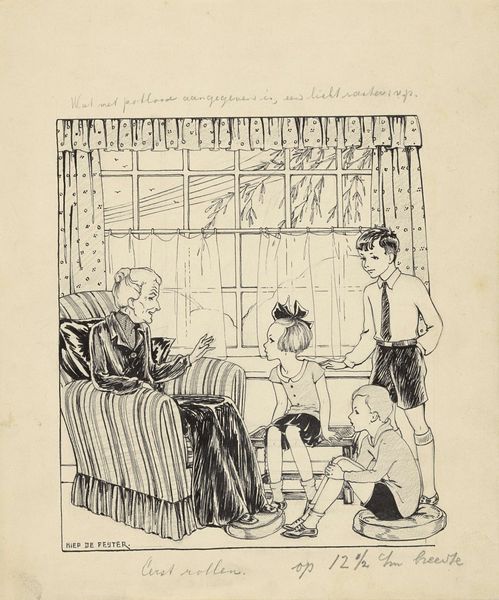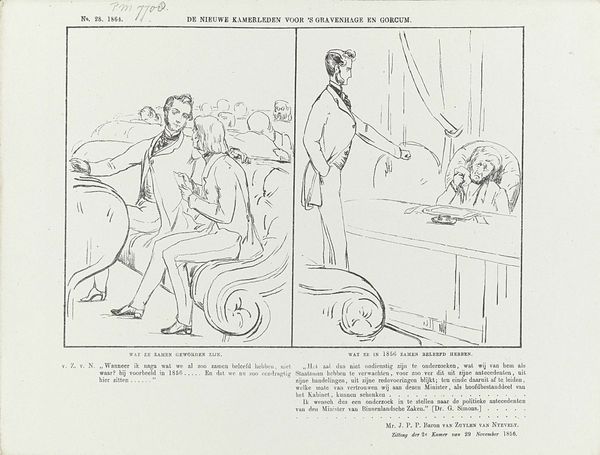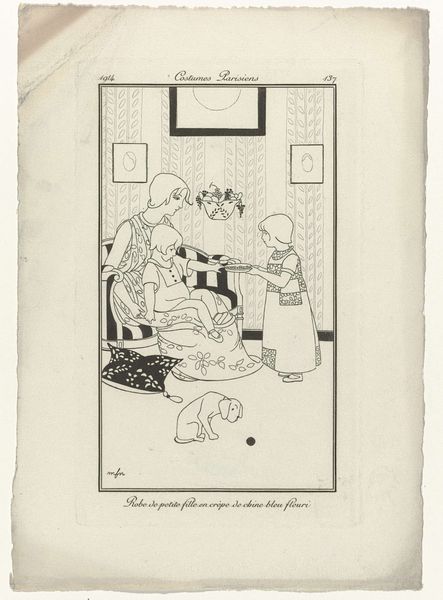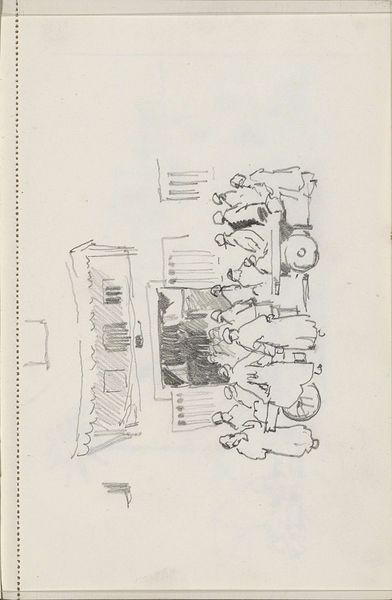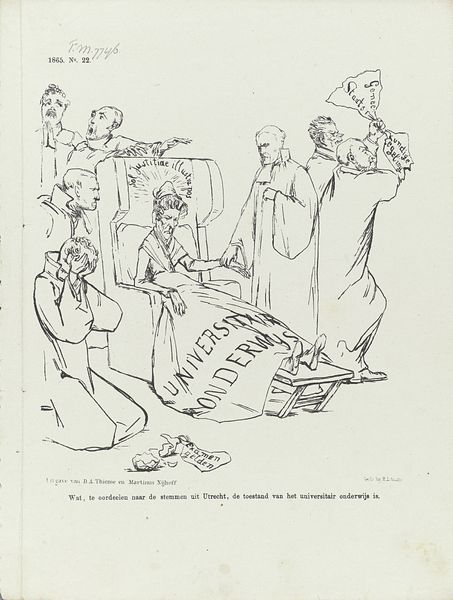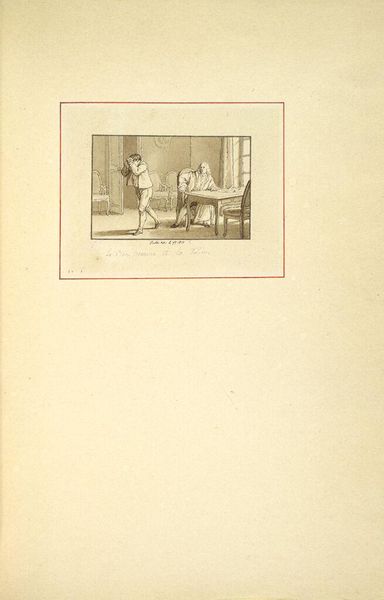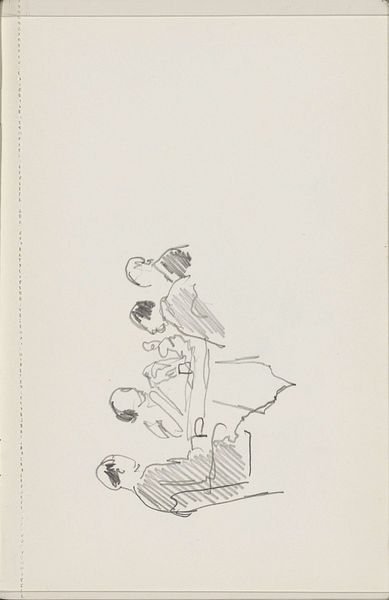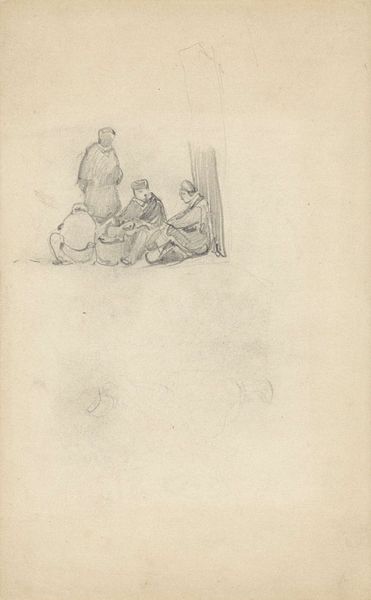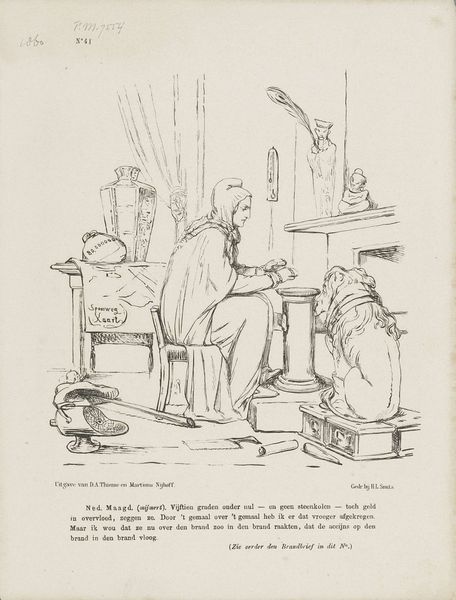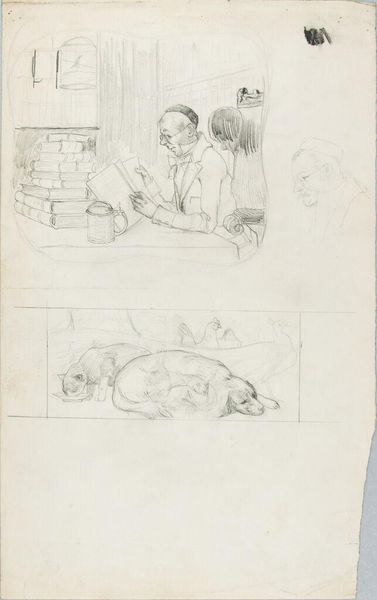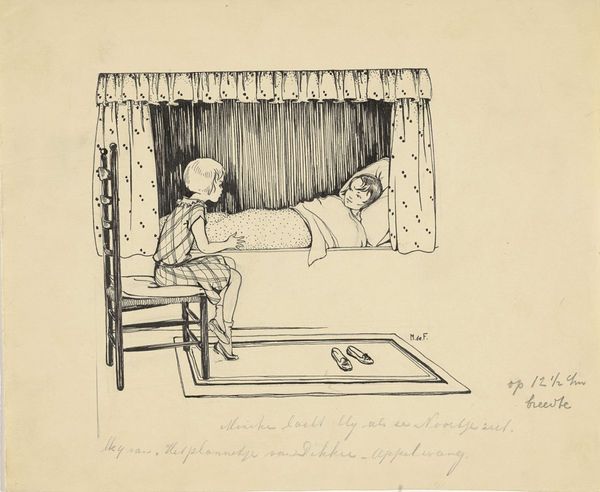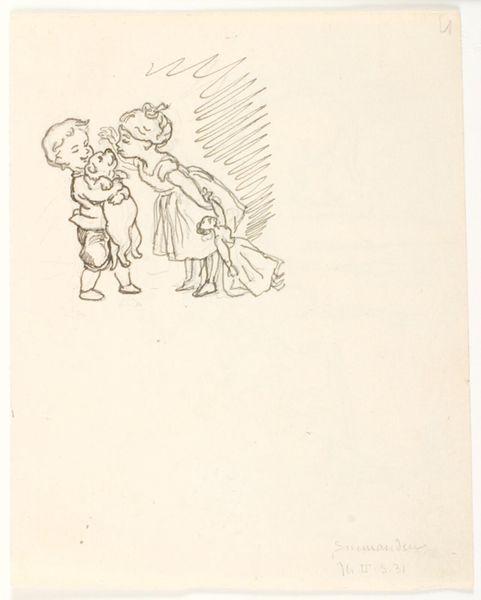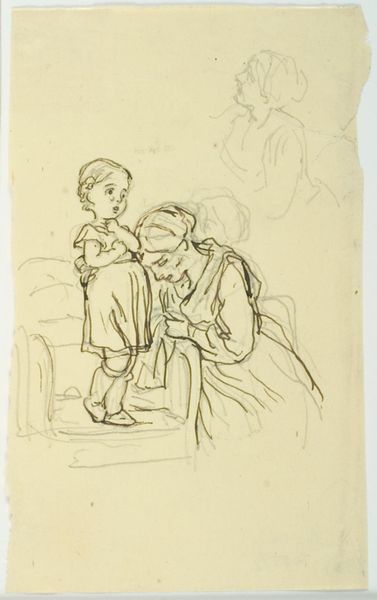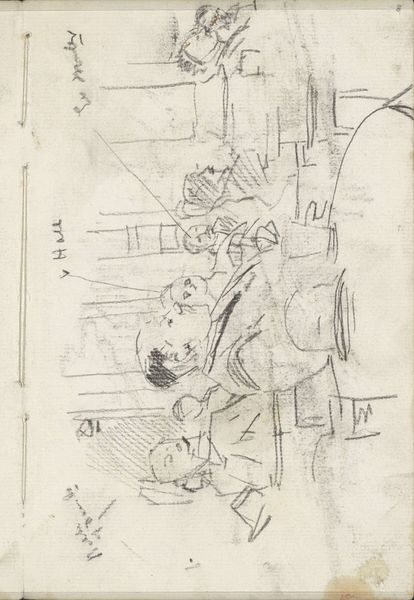
drawing, print, paper, ink
#
drawing
#
narrative-art
# print
#
paper
#
ink
#
genre-painting
#
academic-art
Dimensions: height 275 mm, width 215 mm
Copyright: Rijks Museum: Open Domain
Editor: This is a drawing from 1864 titled "Spotprent op het orthodox-protestants onderwijs, 1864," by Johan Michaël Schmidt Crans, rendered in ink on paper. It depicts a classroom scene above and a mother and child below. It strikes me as a stark, almost melancholic commentary. What do you see in this piece, looking at it through a contemporary lens? Curator: I see a scathing critique of religious education and its impact on the individual and society. Consider the title "Groene Vruchten van het orthodox-protestants onderwijs op de bijzondere school," translated roughly to "Green Fruits of Orthodox Protestant Education at the Special School". "Green Fruits" suggests immaturity, a lack of proper development, right? Now consider the dialogue beneath the scenes, a bleak assessment from the child about a corrupted heart from corrupt parents in the school, versus a mother’s inability to improve the child’s corrupted behavior with kindness and sweetness. How does this visual narrative speak to you in light of discussions around power structures and social conditioning? Editor: It's unsettling. The children are being told that they are all bad seeds, predestined with no possibility for goodness or true improvement regardless of the way they are parented! What do you make of the division between the two scenes, classroom above and mother & child below? Curator: That division is key. It creates a dialectic between institutional indoctrination and individual, familial attempts at nurturing. Are they failing due to the larger structures at play, specifically the constraints placed by orthodox Protestant education? It's posing a question: Is it the education system that is ultimately corrupting, and shaping the lives of individuals for generations to come? The visual style reinforces the weight of these questions, doesn't it? Editor: It certainly does. Looking at it this way makes it far more than just a historical artifact; it's a timeless examination of the struggle between authority and autonomy. Thank you! Curator: Absolutely. Hopefully we can take away from this is how art functions as a mirror to society, challenging us to critically assess its constructs and our places within it.
Comments
No comments
Be the first to comment and join the conversation on the ultimate creative platform.
